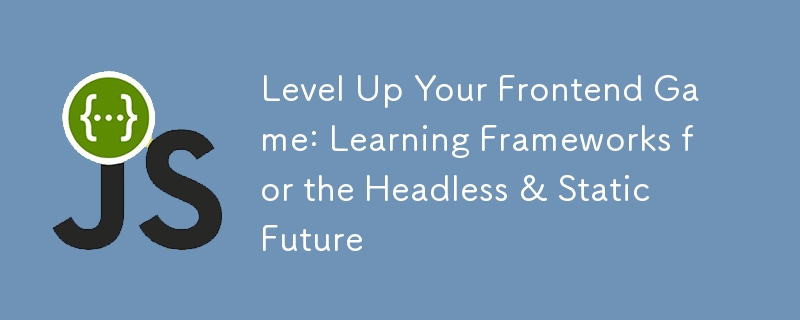

The frontend landscape is evolving at breakneck speed. Forget clunky, monolithic websites – the future belongs to headless CMS and static site generators (SSGs). These sleek powerhouses offer unmatched speed, flexibility, and security, but conquering them requires using the right tools.
To harness their power, developers are turning to Next.js and Gatsby, two cutting-edge frontend frameworks shaping how we craft stunning, robust digital experiences.
Let’s dive into the details.
Content such as blog posts and product pages exists independently of presentation, creating a headless CMS. Popular CMS platforms like WordPress and Drupal can function as content powerhouses, feeding data to any frontend framework, whether Next.js, Gatsby, or a custom solution. The result? Unrivaled flexibility and a lightning-fast experience for users.
SSGs take it a step further. They pre-render static HTML pages at build time, eliminating the need for a server on every request. This translates to lightning-fast loading times, global scalability, and rock-solid security. Plus, developers rejoice in simpler deployments and near-instantaneous edits.
Now, let's meet the frameworks powering this revolution.
1. Next.js
Think of it as React on the fast track. Next.js boasts server-side rendering for SEO excellence, built-in routing, and data fetching. Its hybrid rendering approach (static for most pages, dynamic for interactive elements) delivers the best of both worlds – speed and interactivity. Add hot reloading for lightning-fast development cycles, and you have a true frontrunner.
It’s not all sunshine and rainbows though. Next.js simplifies React development but introduces complexities like conventions and file-based routing, which may be daunting for beginners. Its opinions can limit control, and integrating existing structures or advanced use cases might require workarounds.
The lack of built-in state management and data fetching solutions adds complexity, as developers need third-party libraries. For simple projects, Next.js features may be unnecessary and introduce needless complexity.
2. Gatsby
This static site generator king focuses on one thing – crafting blazing-fast websites. Gatsby leverages GraphQL for fetching data from any source (headless CMS, APIs), then pre-renders static HTML pages optimized for search engines and performance. The result? Websites that load in a blink, score top marks on speed tests, and leave users in awe.
While excellent for content-heavy sites, Gatsby struggles with dynamic elements, requiring additional JavaScript and server-side logic. Effective use of GraphQL demands expertise, potentially overcomplicating simple data needs. Seamless CMS integration isn't guaranteed, necessitating customization. Unlike Next.js or React, Gatsby offers less flexibility for developers requiring total control over their website's behavior and functionality.
It’s essential to keep the pros and cons in mind when selecting which framework to use.
So, you're ready to dive into the headless and static future? Here's your roadmap.
1. Master the Fundamentals
Brush up on your HTML, CSS, and JavaScript. These are the building blocks of any good front-end framework.
2. Choose Your Framework
Decide if Next.js' hybrid approach or Gatsby's pure static generation suits your project better. Both offer extensive documentation and tutorials.
3. Dive into Tutorials
Numerous online resources guide you through building projects with Next.js and Gatsby. Follow along, build, and experiment!
4. Join the Community
Connect with other developers on forums, threads, and social media. Share experiences, ask questions, and learn from each other.
5. Build Something Real
Start small, but build something you're passionate about. Deploy your creation, share it with the world, and get feedback. This is where true learning happens.
Remember, the journey is just as important as the destination. Embrace the learning process, challenge yourself, and don't be afraid to experiment. With dedication and the right tools (Next.js, Gatsby), you'll build tomorrow's stunning, scalable front-end experiences in no time.
This is just the inception of front-end evolution. So, pick your framework, embrace the headless and static future, and level up your game!
Stay updated on the latest trends with Arbisoft Next! The frontend landscape is dynamic, so continuous learning is key to staying ahead of the curve.
About Arbisoft
Like what you read? If you’re interested in partnering with us, contact us here. Our team of over 900 members across five global offices specializes in Artificial Intelligence, Traveltech, and Edtech. Our partner platforms serve millions of users daily.
We’re always excited to connect with people who are changing the world. Get in touch!
The above is the detailed content of Level Up Your Frontend Game: Learning Frameworks for the Headless & Static Future. For more information, please follow other related articles on the PHP Chinese website!




